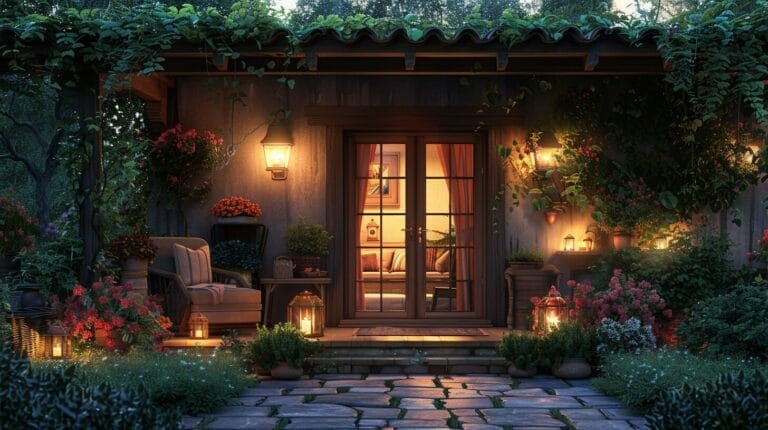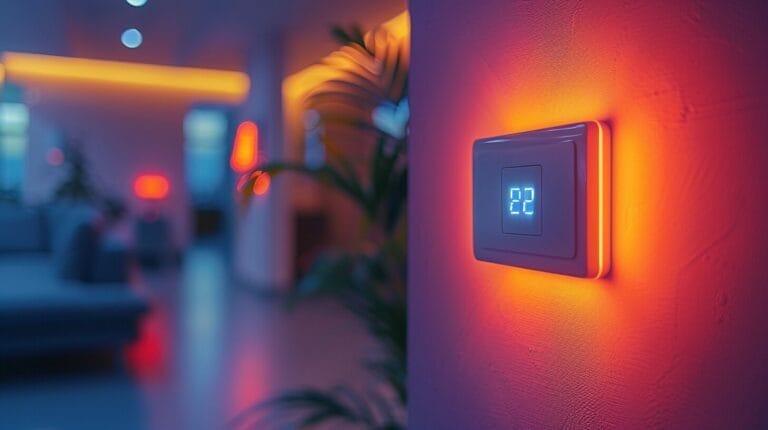Difference Between Floodlight and Spotlight: A Comparison
As we observe the interplay between floodlights and spotlights in illuminating different spaces, the nuances of their distinct functions become apparent. The contrast between the two types of lighting lies not only in their coverage and intensity but also in the way they shape our perception of the environment. Understanding how floodlights and spotlights diverge in their applications can lead us to a deeper appreciation of the interplay between light and shadow, inviting us to reconsider how we interact with and experience the spaces we inhabit.
Key Takeaways
- Floodlights provide broad, uniform illumination for large areas.
- Spotlights focus sharply on specific features or architectural details.
- Floodlights are versatile for outdoor events and security lighting.
- Spotlights accentuate focal points and offer customizable solutions.
- Evaluate coverage needed and intended purpose when choosing between floodlights and spotlights.
Distinguishing Floodlights vs Spotlights: An Overview

When comparing floodlights and spotlights, it’s important to understand their distinct characteristics and applications. Spotlights are designed for a narrow beam angle, typically around 45 degrees or less, concentrating light in a specific area with high intensity. On the other hand, floodlights have a wider beam angle, often exceeding 120 degrees, allowing them to illuminate a larger coverage area with a more even distribution of light.
LED floodlights, a popular choice for outdoor lighting, offer energy efficiency and long lifespans compared to traditional floodlights. Their intense brightness and broad coverage make them ideal for lighting up stadiums, parking lots, or outdoor events. In contrast, spotlights excel at highlighting specific features such as architectural details, artworks or landscaping elements with precision and emphasis.
Considering the beam angle, coverage area, and intensity, the choice between spotlight vs floodlight depends on the desired lighting effect and the space’s purpose. Whether it’s creating ambiance, enhancing security, or showcasing focal points, understanding these distinctions helps in selecting the right lighting solution for innovative and effective illumination.
Shedding Light on The Unique Characteristics of Floodlights

Floodlights are designed to provide broad and uniform illumination over a sizable expanse, making them ideal for lighting up large outdoor spaces such as stadiums, parking lots, or building facades.
One key factor that influences a floodlight’s effectiveness is the beam angle it offers. A wider beam angle allows the light to spread out more, covering a greater area, while a narrower beam angle concentrates the light in a specific direction. When considering outdoor lighting with floodlights, it’s essential to take into account the beam angle to guarantee comprehensive coverage.
Floodlights differ from spotlights in their capacity to light up expansive areas, offering a more general and inclusive illumination compared to the focused intensity of spotlights. The versatility of floodlights makes them a popular choice for architectural lighting, security lighting, and sports field illumination. Their ability to provide ample brightness across a wide space sets them apart as essential tools for outdoor lighting solutions.
Spotlighting the Features of Spotlights

Spotlights, with their ability to focus light sharply on specific areas, play an essential role in highlighting key features and creating dramatic lighting effects in various settings. The concentrated beam pattern of spotlights makes them perfect for accentuating focal points in indoor lighting design. By directing light precisely where it’s needed, spotlights can emphasize architectural details, artwork, or specific areas within a room, adding depth and dimension to the overall ambiance.
Innovative designers often use spotlights to create visual interest and draw attention to particular elements in a space. Their versatility allows for customizable lighting solutions that cater to specific requirements, whether it be in residential, commercial, or hospitality environments. When strategically placed, spotlights can enhance the aesthetics of a room, giving it a sophisticated and polished look. The controlled beam of light produced by spotlights enables designers to sculpt the environment, highlighting textures, colors, and shapes with precision and flair.
Practical Applications: Using Floodlights and Spotlights in Outdoor Lighting

Exploring practical applications for using floodlights and spotlights in outdoor lighting enhances the ambiance and functionality of external spaces.
- Highlighting Architectural Features: Spotlights can be strategically placed to accentuate unique architectural elements of a building or structure, adding depth and visual interest to the landscape.
- Creating Pathway Illumination: Floodlights are ideal for illuminating pathways, walkways, and driveways in outdoor settings, providing safety and guidance for individuals moving through the space.
- Enhancing Outdoor Events: Spotlights can be used to create focal points during outdoor events or gatherings, drawing attention to specific areas like stages, sculptures, or designated activity zones.
- Balancing Light Levels: Combining floodlights and spotlights in outdoor lighting design helps strike a balance between ambient lighting and accent lighting, ensuring a harmonious and well-lit outdoor environment.
Choosing the Right Light: Floodlight or Spotlight?

When deciding between floodlights and spotlights for outdoor lighting, it’s essential to take into account the specific lighting requirements for each area. Floodlights are ideal for illuminating large areas with a broad, uniform beam of light, making them perfect for enhancing security and visibility.
On the other hand, spotlights are designed to provide focused beams of light, making them suitable for highlighting specific features like architectural details or landscape elements. To choose the right light, evaluate the coverage needed and the intended purpose of the lighting.
For expansive spaces that require consistent brightness throughout, a floodlight might be the best option. Conversely, if you want to draw attention to a particular focal point or create visual interest, a spotlight could be more suitable.
Conclusion
To sum up, understanding the differences between floodlights and spotlights can help in selecting the right lighting solution for various applications.
While floodlights offer broad and uniform illumination for outdoor events and security purposes, spotlights focus sharply on specific areas to highlight architectural details or artworks.
By considering the intended purpose and coverage needed, one can make an informed decision between floodlights and spotlights to effectively illuminate and enhance different spaces.
Frequently Asked Questions
What is the difference between floodlight and spotlight?
The main difference between floodlights and spotlights lies in their beam angle and range. Floodlights cast a wide beam of light over a large area, while spotlights produce a narrow beam of light that can be thrown a longer distance with more focus.
When should I choose a floodlight over a spotlight?
You should choose a floodlight when you need to illuminate a broad area, such as outdoor spaces, sports stadiums, or for security purposes. Floodlights are high-intensity lights typically used for primary illumination in situations where wide coverage is crucial.
What about choosing a spotlight instead of a floodlight?
Spotlights are ideal for more precise lighting needs, such as highlighting specific objects or areas indoors. They are often used for accent or decorative purposes, as they can focus light on a particular spot or object effectively.
How do floodlights and spotlights differ in their output?
Floodlights generally produce the same amount of light output as spotlights. The difference lies in how the light is distributed – floodlights spread the light over a wide area, while spotlights focus the light on a specific point.
Can you provide a comprehensive guide on choosing between floodlights and spotlights for specific lighting needs?
When deciding between floodlights and spotlights, consider factors such as the purpose of lighting, the size of the area to be illuminated, the desired beam angle, and the available budget. Assessing these factors will help you determine whether a floodlight or spotlight is more suitable for your specific lighting scenario.







